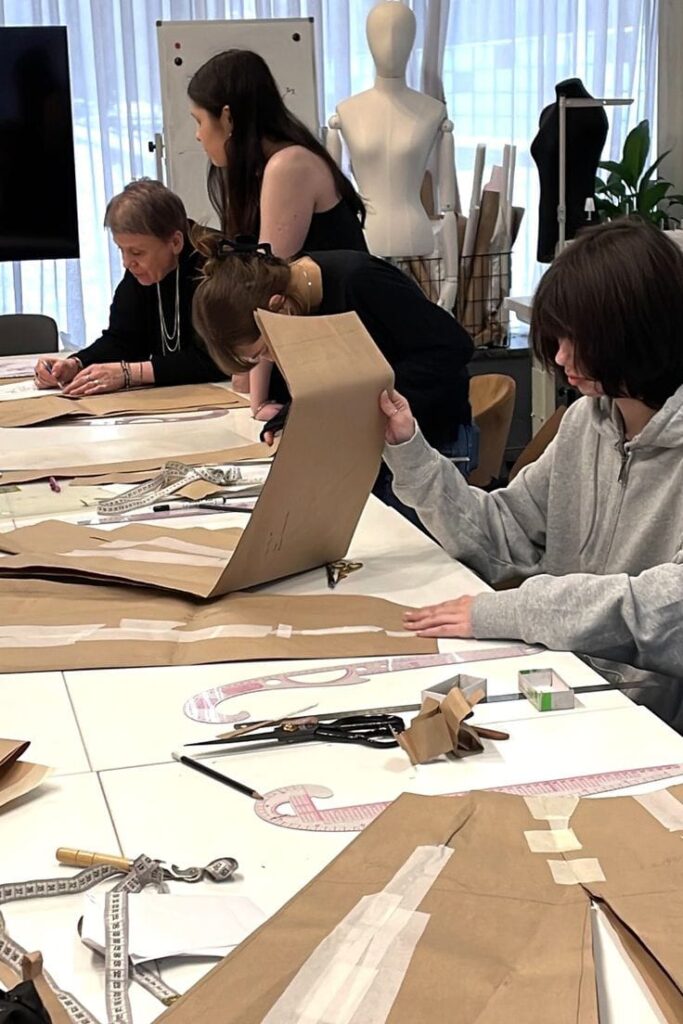The Renaissance: Fashion in the Modern Era

The Whisper of the Past
In a neighborhood where time seemed to have forgotten the neon lights, Marta discovered an old box in her grandmother’s attic.
Among yellowed newspapers, cassette tapes, and a typewriter that seemed to breathe ancient dust, she found a worn-out notebook. Each page held a story of fashion, design, and music — a kind of emotional map for those who loved all things retro.
The Whisper of the Past
Marta, a graphic designer and lover of details, had always felt that fashion moved in cycles that repeated with subtle variations.
When she opened the notebook, one phrase felt as if it were written for her:
“The future isn’t something new — it’s a reinterpretation of the past.”
That night, the essence of the 60s, 70s, and 80s came alive in her heart like a cassette clicking into a tape deck.
The 1960s: minimalist elegance, clean lines, and neutral tones.
The 1970s: freedom of expression, rich textures, and psychedelic prints.
The 1980s: bold neon colors, material mixes, and pop culture.
The notebook promised a true rebirth — a retro style that didn’t imitate but reimagined.
The Awakening of the Studio
Marta decided to open a small design studio called “Retro Rebirth.”
Her mission was clear: to create modern pieces inspired by past decades but with a contemporary sensitivity that spoke to the 21st century.
She built her vision on three pillars:
Sustainability: using recycled materials, organic fabrics, and low-impact production.
Timeless quality: fewer fast-fashion trends, more enduring pieces.
Visual storytelling: each product would tell an emotional story.
Her first collection featured denim jackets inspired by the 60s, redesigned with modern silhouettes. The metallic patches and visible seams paid tribute to classic denim, while giving it a fresh, modern twist.
🌆 The City as a Stage
The city — with its heartbeat of traffic and neon signs — became her ally.
On the rooftop of an old building, Marta photographed her pieces with a Polaroid camera and a smartphone. The images captured the tension between old and new: a classic trench coat next to a pearlescent jacket, and a bag combining recycled leather with a gold chain.
Retro style was no longer just a look — it had become a visual language that spoke of identity, memory, and conscious living.
🔍 SEO in the Creative Workshop
Marta knew her story needed to be found.
She learned to weave SEO with the same patience she used to mend a seam.
On her blog, she published articles that blended storytelling with optimization:
Retro Style Guide by Decade: how to find authentic pieces and blend them into modern outfits.
How to Reimagine 80s Looks Without Losing Comfort: tips on silhouettes, fabrics, and color palettes.
Sustainability as an Eternal Trend: how to choose durable and responsible fashion.
She used keywords like “modern retro fashion,” “rebirth of retro style,” “sustainable vintage clothing,” and “retro inspiration 60s 70s 80s.”
Each product description was rich in voice and story, improving user experience and increasing conversions.
🎶 A Sensory Journey
The Retro Rebirth collection wasn’t just visual.
Each garment came with a sensory note: the texture of the fabric, the sound of an old zipper, the scent of freshly printed labels.
Marta organized events in collaborative stores where visitors could:
Try on iconic pieces and learn how to modernize them.
Listen to playlists inspired by past decades.
Watch live sewing demonstrations showing the process of textile recovery.
These gatherings turned shopping into an emotional experience — something that search algorithms also seemed to appreciate. Visits turned into reading time, comments, and repeat purchases.
The Renaissance as a Movement
Over time, Retro Rebirth became more than a brand — it became a movement uniting fashion, history, and responsibility.
Social media filled with images where retro wasn’t nostalgia but innovation:
pieces designed to last, telling stories that inspired mindful living.
The feed showcased looks pairing 60s jackets with minimalist sneakers.
Reels featured clients reconnecting family memories with personal style.
Blog posts explained how each garment became a symbol of self-expression.
Retro fashion evolved into a way of life, reminding people that the past isn’t closed — it’s an endless source of creativity.
🪡 An Ending… and a New Beginning
At her end-of-season exhibition, Marta presented a special piece:
a classic-cut coat transformed with a color palette inspired by 70s sunsets and lined with recycled fabric engraved with the stories of those who made it.
When a visitor tried it on, she said:
“This retro style doesn’t just look good — it tells a story of hope and responsibility.”
Marta smiled.
She had achieved what she always sought — a rebirth of retro style that didn’t imitate but reinvented.
A rebirth that connected generations, listened to the city, and respected the memory of those who came before.
The Promise of the Future
The rebirth of retro style doesn’t end here.
Each season brought new discoveries: upcycling techniques, collaborations with local artisans, and capsule collections blending historical objects with modern technology.
The mission remained clear:
Preserve the essence of past decades while adapting to a sustainable world.
Tell stories that make readers feel that fashion can be an act of love — for history and for the planet.
Build a community that values quality over quantity, seeing fashion as a shared language.
If this journey left one lesson, it was this:
True rebirth isn’t returning to what was, but allowing what was to inspire what will be.




